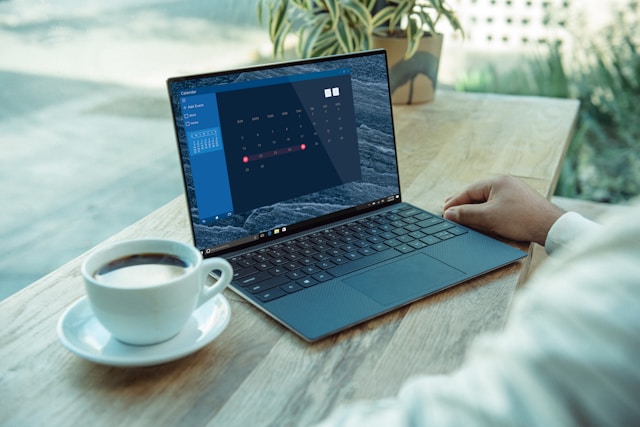How Open-Source Hardware Is Reshaping the Future of Personal Computing
A quiet revolution is happening in a world dominated by closed ecosystems and sealed-off devices—one powered not by billion-dollar tech giants but by hackers, hobbyists, and educators. It’s called open-source hardware, transforming what we expect from personal computing.
Forget about waiting for your favorite brand to release the next feature. Open-source hardware is about taking control—over design, performance, privacy, and even philosophy.
🛠️ What Is Open-Source Hardware?
When we say “open-source hardware,” we’re talking about devices whose design is publicly available. That means schematics, firmware, blueprints—everything. Anyone can study, modify, replicate, or improve it.
Think Raspberry Pi, Arduino, Pine64, or the modular and repairable Framework Laptop. These aren’t just budget-friendly gadgets but blueprints for a different future.
🔁 The Shift from Consumers to Creators
Traditionally, personal computing has been a one-way street. Big tech builds it; you buy it. Need more ports? Too bad. Want to upgrade memory? Not an option. Curious about how it works? That’s proprietary.
Open hardware flips that dynamic. You don’t just use a device—you understand, modify, fix, and even teach with it. In classrooms, labs, and garages, people learn the skills that transform them from passive users to active engineers.
🌱 Why It Matters for the Future
We’re at a crossroads. On one path: increasingly closed systems, glued-together laptops, locked bootloaders, and mysterious black boxes. On the other hand, you can open up, tinker with, and trust.
Open-source hardware promotes:
- Longevity: Devices that can be upgraded or repaired live longer.
- Transparency: You know exactly what the machine is doing—and what it’s not.
- Security: Open designs can be audited. No more blind faith in firmware.
- Sustainability: Why replace an entire laptop when you can swap a $30 mainboard?
It’s not just tech—it’s a mindset.
💡 Real-world Examples of Disruption
Let’s take a look at how open-source hardware is showing up in the real world:
- Framework Laptop: A fully modular notebook where users can swap out memory, storage, ports—even the mainboard. It’s like LEGO for grown-up geeks.
- Arduino: Microcontrollers that taught a generation of inventors how to build everything from robots to weather stations.
- Raspberry Pi: The $35 computer that launched a thousand projects—from retro gaming to home servers to AI experiments.
- RISC-V Boards: Open instruction set architecture gaining traction as a rival to ARM and x86.
These aren’t fringe experiments anymore. They’re viable alternatives to mainstream machines.
🔩 One List: What Makes Open-Source Hardware So Powerful
Here’s why it’s more than just “DIY computing”:
- Repairability: Fix it, don’t toss it.
- Modularity: Upgrade only what you need.
- Learning Potential: It’s a lab, not just a laptop.
- Community-Driven Innovation: Improvements come from the ground up.
- Security by Visibility: You can audit every layer.
- Freedom of Choice: No vendor lock-in.
It’s not about hacking for the sake of it—it’s about owning your technology.
🌍 Who’s Using It—and Why?
Open-source hardware is finding fans in surprising places:
- Educators use it to teach coding, electronics, and digital literacy.
- Developers use it to prototype new devices quickly.
- Privacy advocates prefer it for its suitability.
- Gamers and tinkerers love it for retro builds and emulators.
- Environmentalists see it as the antidote to disposable tech.
This isn’t niche anymore—it’s growing into a movement.
🚀 What’s Next?
As more people embrace open hardware, we’re seeing a wave of momentum:
- RISC-V is gaining industry support, potentially disrupting the ARM vs. Intel duopoly.
- Startups are building ethical laptops, routers, and even smartphones.
- Cloud and edge computing blend with on-prem open devices, giving users more control over where and how their data lives.
- AI hardware accelerators are also being developed with open standards—democratizing access to machine learning tools.
The next five years could be pivotal. Will open-source hardware become the new normal or stay on a parallel track? That depends on how many of us choose it.
🧠 Final Thoughts
Open-source hardware isn’t just for techies. It’s for anyone ever asked, “Why can’t I fix this myself?” or “What else can this do?” In a time when most tech is built to be opaque, locked down, and disposable, open hardware is a small rebellion—and a big opportunity.
It invites us to get our hands dirty, think critically, and build a future that we understand—not just faster machines but better ones, not just more intelligent computers but smarter users.
